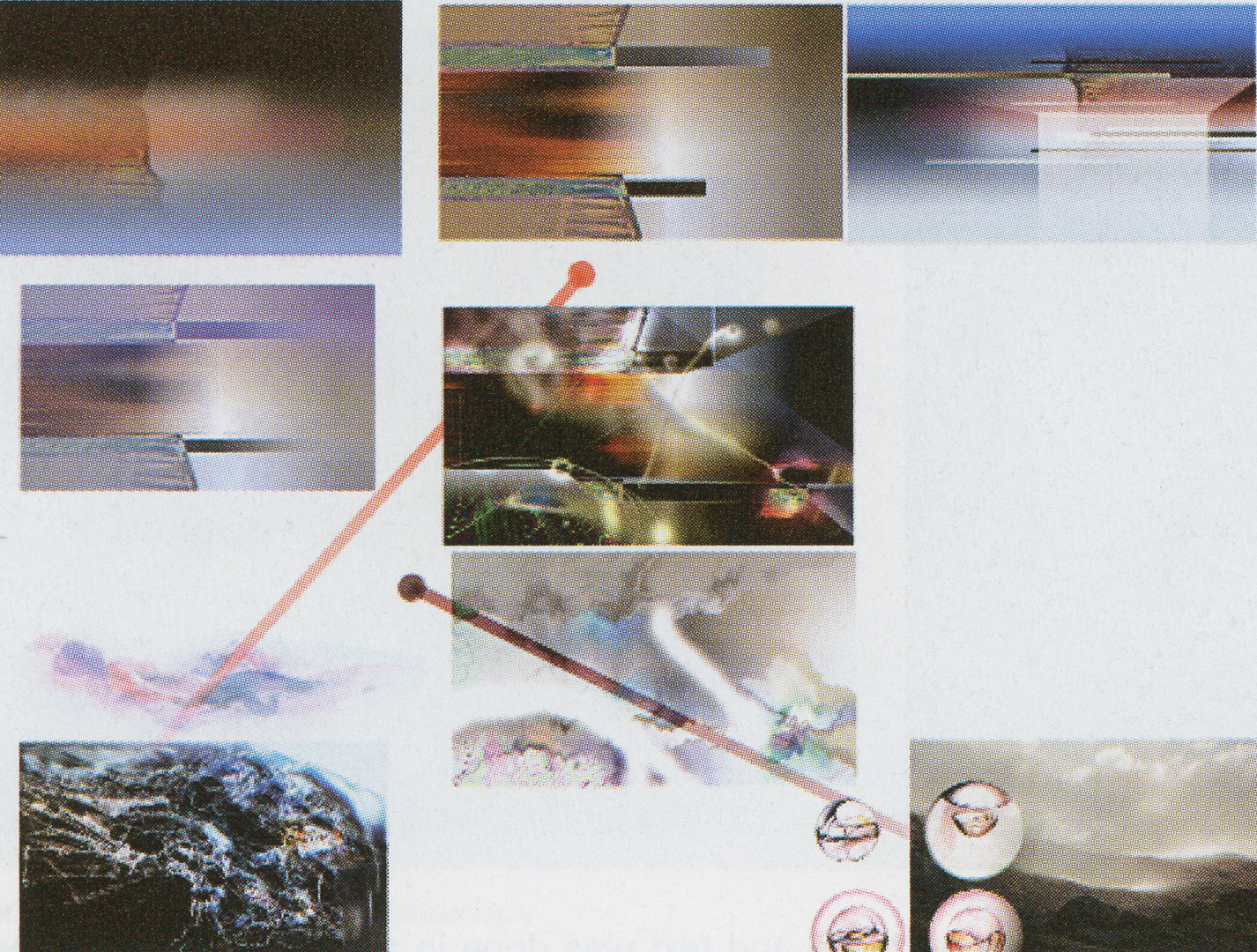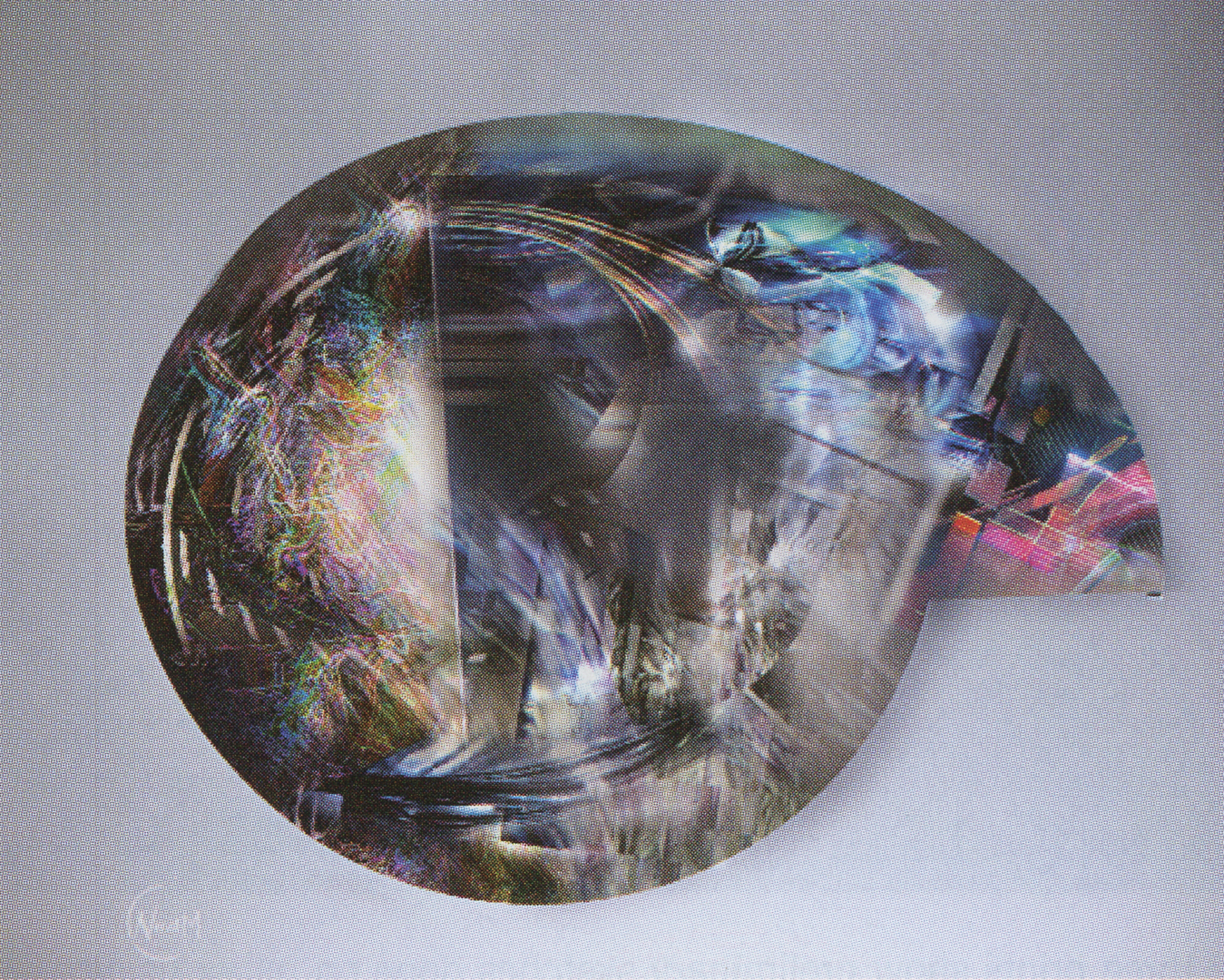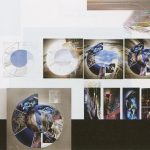Ned Meneses: Unbound: The Uncertainty Principle, Schemas
Artist(s):
Title:
- Unbound: The Uncertainty Principle, Schemas
Exhibition:
Creation Year:
- 2002
Medium:
- mixed media
Category:
Keywords:
Artist Statement:
Sometimes art is about the journey. While I worked on this two-part artwork, I constantly had thoughts of why I followed a certain route, and that became a compositional dimension in itself.
This work deals with taking compositions that are very much separate, and linking or joining them to make new ones. Combining segments works much like trying to combine stories; without guidance, they would lead to confusion and incoherence.
Each piece had a different birth and progressed through its own stress and growth-flow. Each image started as a balanced, self-contained entity (to analyze each of those could be taken to the analogical extreme). As an artist, you seek to find the dynamic interaction that visual illusion demands. There is a precise moment when parts come together, and they become inextricably unified to reveal a definite new framework. This point makes “combinational” work an effective cognitive exploration tool as well as one of introspection, each with its own approach. The process of connecting images in our minds has its variations in blending, or just attaching, but to truly unify is to fuse new ideas. However metaphorical to our thoughts, the process and the ideas it reveals reflect the power of the visual system to abstract and arrange metapatterns: universal inherent structures of thought, within our minds with just a simple stare, an amazing computational feat all viewers execute when they observe the world.
One major theme is complexity. This work’s complexity arises from the increasing number of possibilities in the process, as in the expansion of every facet of technology and information. For robotic (computer) vision to be possible, we will have to understand much better how we process what we perceive and induce visually; that is the job of the sense of aesthetics for now. In time, visual engines will be very powerful and will allow us to look into the intricacies of mathematics and physics while rediscovering our own world of art. The elegant symmetry of complexity-deep, cold, and austere-will take us far. Many kinds of languages await us in the pursuit of such patterns and structures at increasingly larger scales. Visual thinking will propel us in new ways.
Process Information:
Base 1. Schemas: Tiling and Reverberation
A schema is an in-built system that activates and drives something, visually or otherwise. This picture starts out with a definite plan, but the end of the journey is left very much a mystery. I started out by aligning the images in the radial cells and directly applying them to the center. For each section, I used Photoshop to place the primary elements and proceeded to order layers and set sizes. I often use the images themselves as brushes; they make unique after effects. The source images here are different from each other, yet rather homogenous, more related to texture than form, and more neural and digital than defined in shape. This was much more rigorous than I thought, but I found many interesting functioning transitions. A “Zen” mindset keeps thoughts from getting in the way. Lastly, when the images were combined and worked aggressively, it was very difficult to predict what would result. This is a matter of spontaneous composition. Our visual perception guides the process but it will not provide consciously formulated answers until we know most of its mechanisms.
Base 2. The Uncertainty Principle: Symbolism
The artistic ideal is rooted in “knowing” that the image will come together. The parts one starts with are very defined in themselves. They are not traditional elements, since they can each stand on their own, keeping something of their original nature (unlike Schemas where they acted as broad inflections). One component is a photograph taken in the Bolivian Andes, another is a watercolor dubbed and filtered (Edge Detect and some tweaking to offset three constituent layers), and the third, the main anchor image, is a composite designed from scratch. They seem very separate, but at the subconscious level higher order is possible. This falls in the domain of dynamicist cognition; it traces some connectionist and symbolic modes of Al. These were the simultaneous ends in mind. Though less abstracted, they preserve the outcome: a self-contained, stabilized composition. The key stage is in initially selecting what is to come together without knowing a predicting factor such as the validity of theories, (an uncertainty principle). When it is done, it should be left alone to hold its space. The process becomes really endless when newer forms are introduced.
Affiliation Where Artwork Was Created:
- Digital Artscape








